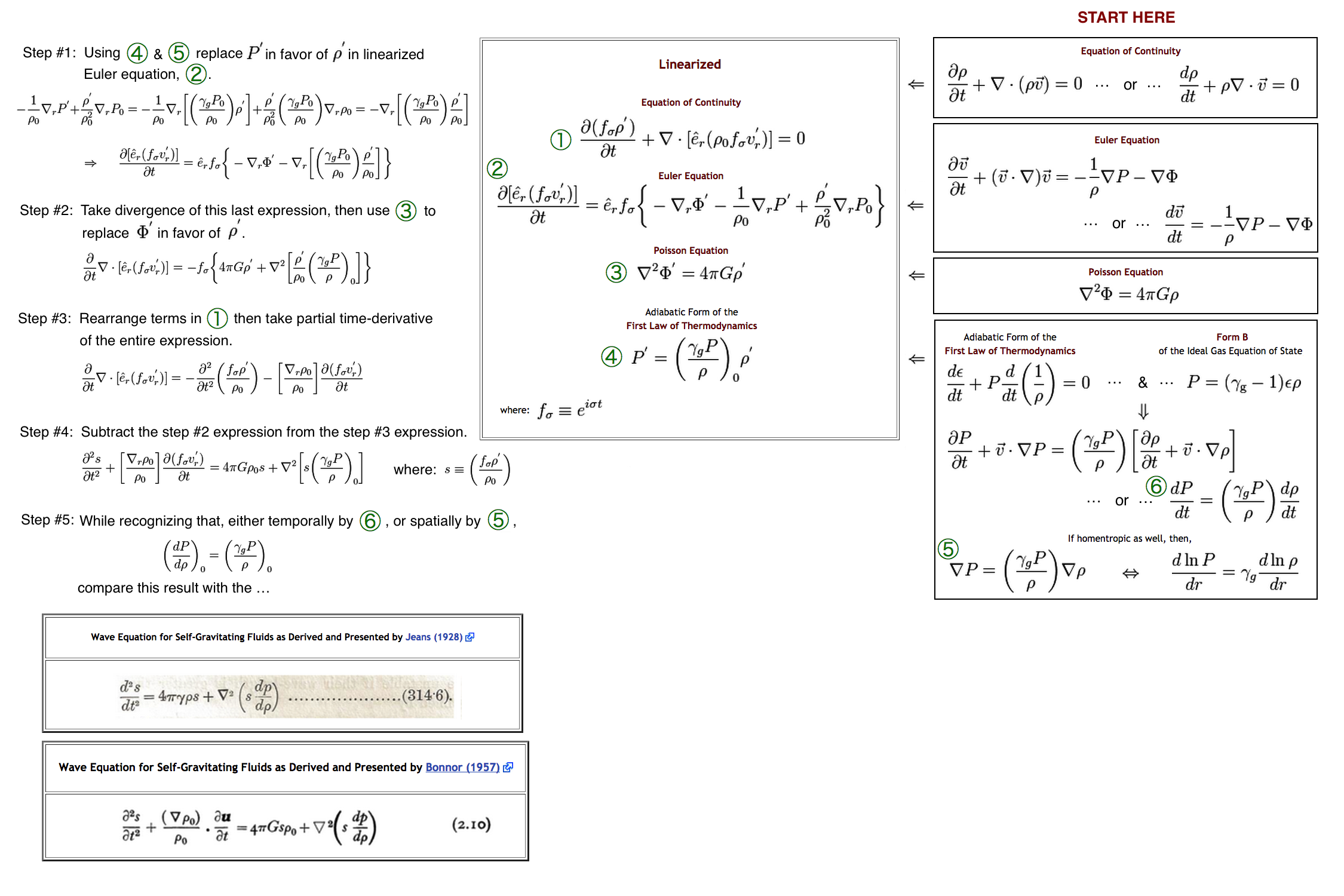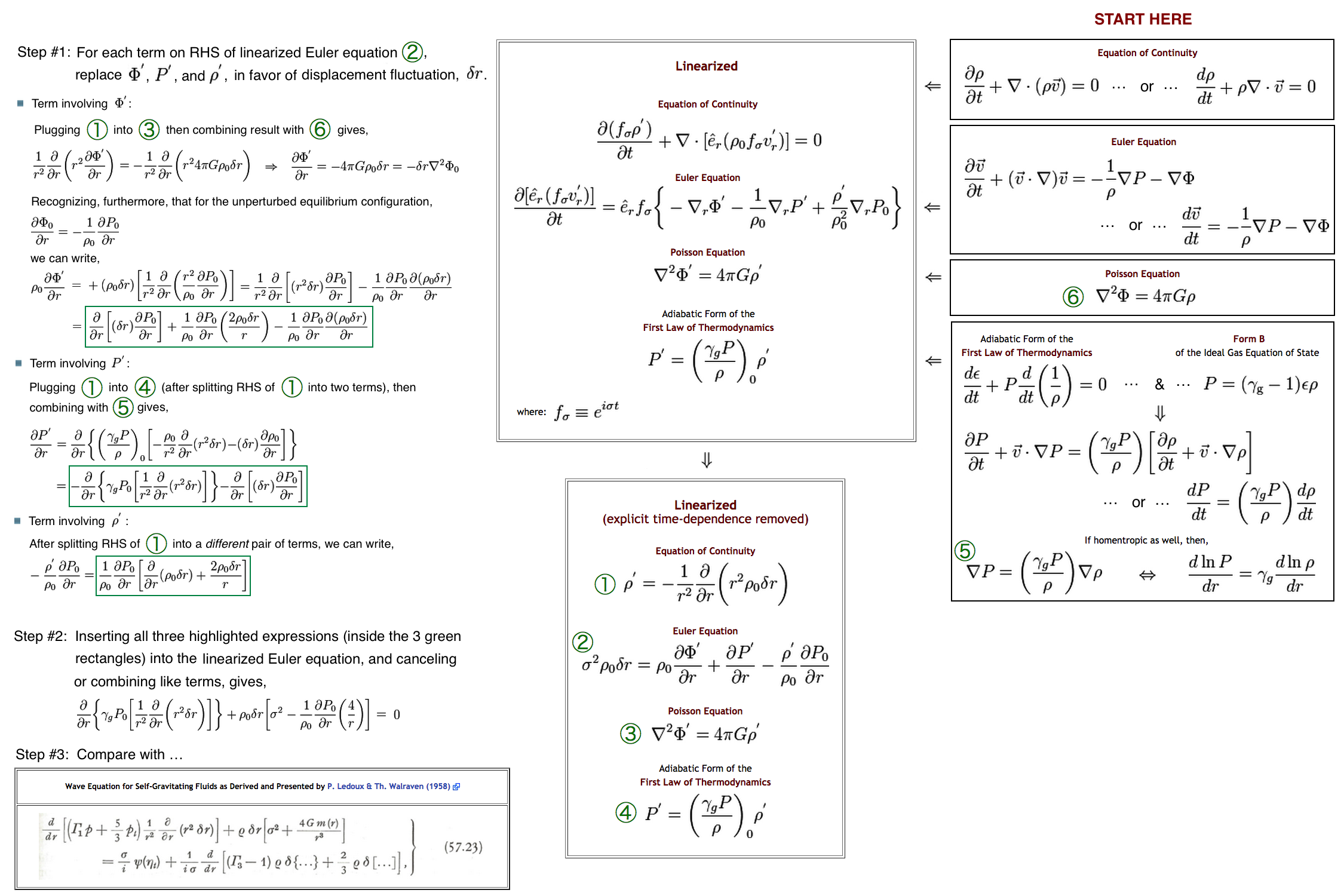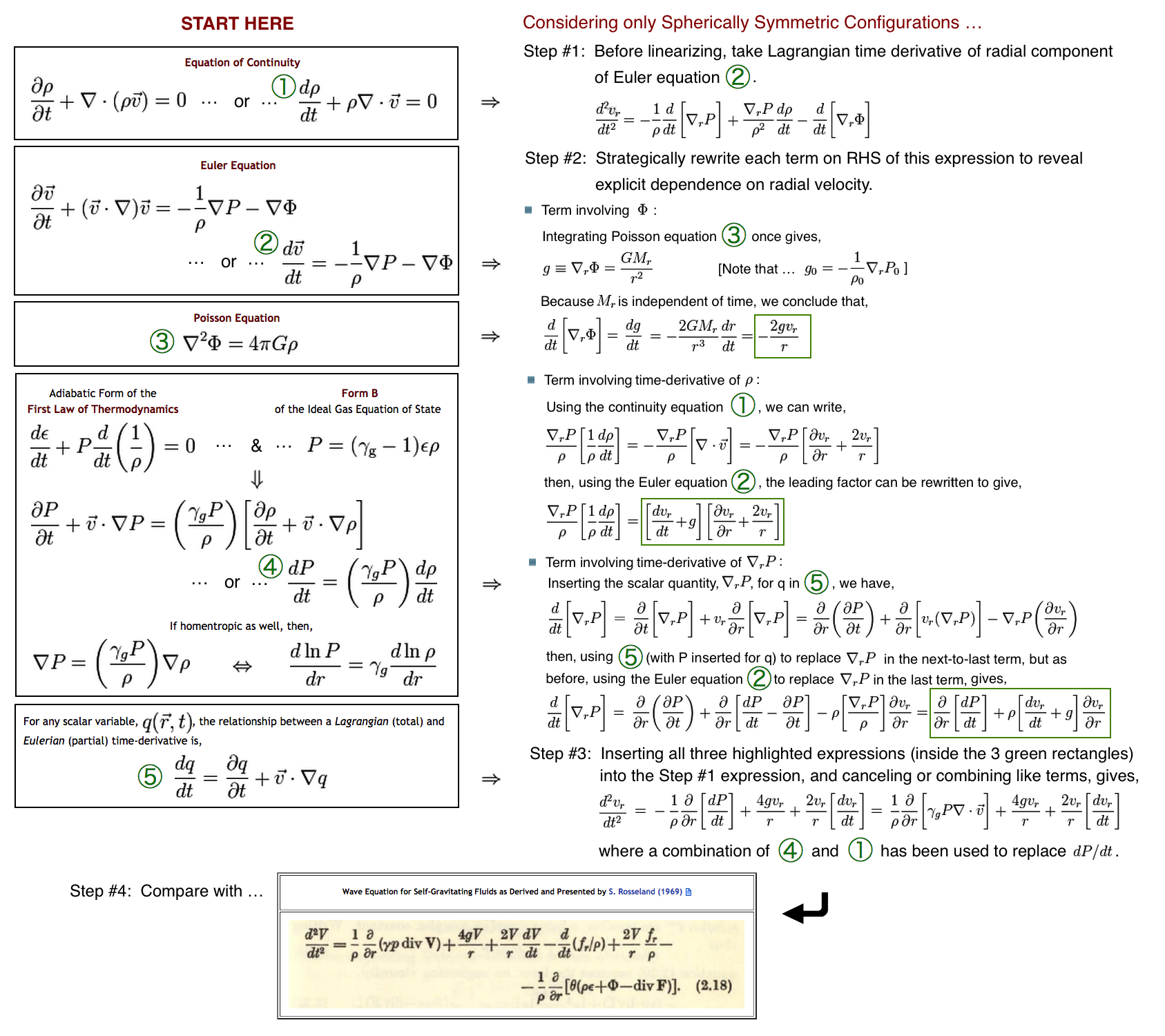User:Tohline/H Book
Preface from the original version of this HyperText Book (H_Book):
November 18, 1994
Much of our present, basic understanding of the structure, stability, and dynamical evolution of individual stars, short-period binary star systems, and the gaseous disks that are associated with numerous types of stellar systems (including galaxies) is derived from an examination of the behavior of a specific set of coupled, partial differential equations. These equations — most of which also are heavily utilized in studies of continuum flows in terrestrial environments — are thought to govern the underlying physics of all macroscopic "fluid" systems in astronomy. Although relatively simple in form, they prove to be very rich in nature... <more>

|
|---|
| | Tiled Menu | Tables of Content | Banner Video | Tohline Home Page | |
Pictorial Table of Contents
Context
- Principal Governing Equations
- Continuity Equation
- Euler Equation
- <math>1^\mathrm{st}</math> Law of Thermodynamics
- Poisson Equation
Applications
Spherically Symmetric Configurations
Introduction (Alternate Introduction)
Structure:
🎦 ⚜
Here we show how the set of principal governing equations (PGEs) can be solved to determine the equilibrium structure of spherically symmetric fluid configurations — such as individual, nonrotating stars or protostellar gas clouds. After supplementing the PGEs by specifying an equation of state of the fluid, the system of equations is usually solved by employing one of three techniques to obtain a "detailed force-balanced" model that provides the radius, <math>~R_\mathrm{eq}</math>, of the equilibrium configuration — given its mass, <math>~M</math>, and central pressure, <math>~P_c</math>, for example — as well as details regarding the internal radial profiles of the fluid density and fluid pressure. As our various discussions illustrate (see the table of contents, below), simply varying the power-law index in a polytropic equation of state gives rise to equilibrium configurations that have a wide variety of internal structural profiles.
If one is not particularly concerned about details regarding the distribution of matter within the equilibrium configuration, a good estimate of the size of the equilibrium system can be determined by assuming a uniform-density structure then identifying local extrema in the system's global free energy. In the astrophysics community, the mathematical relation that serves to define the properties of configurations that are associated with such free-energy extrema is often referred to as the scalar virial theorem … <more>
In the following table, each green check mark identifies and provides a link to an H_Book chapter that presents a detailed discussion of the topic that is identified on the left — for example, the equilibirum structure of "isolated polytropes" or an "isothermal sphere embedded in an external medium." Mathematical models that provide full solutions to the PGEs, including details regarding the internal structural profiles of equilibrium configurations, are derived in chapters whose check marks fall under the column labeled "Detailed Force-Balance." Insight into the properties of equilibrium systems that is revealed via an analysis of a system's free-energy and the corresponding scalar virial theorem is presented in chapters whose check marks fall under the column labeled "Virial Equilibrium."
|
Solution Strategies: |
Detailed Force-Balance |
Virial Equilibrium |
||||||||||||||||||||||||||||||||||||||||||||||||||||||||||||||||||||||||
|---|---|---|---|---|---|---|---|---|---|---|---|---|---|---|---|---|---|---|---|---|---|---|---|---|---|---|---|---|---|---|---|---|---|---|---|---|---|---|---|---|---|---|---|---|---|---|---|---|---|---|---|---|---|---|---|---|---|---|---|---|---|---|---|---|---|---|---|---|---|---|---|---|---|---|
|
||||||||||||||||||||||||||||||||||||||||||||||||||||||||||||||||||||||||||
Stability:
Suppose we want to study the stability of one of the spherically symmetric, equilibrium structures that has been described in the above "Structure" chapters. One approach is to solve an eigenvalue problem whose governing second-order ODE — for example, the Adiabatic Wave Equation — comes directly from perturbing the equilibrium model and a linearization of the overarching set of principal governing equations. In the set of chapters that is identified in the upper-left quadrant of the following table of content, we explain how the relevant wave equation for self-gravitating systems is derived from either a Lagrangian perspective or an Eulerian perspective, and how it resembles the equation that describes the propagation of sound waves in terrestrial fluids. Another approach, which is described by the chapter(s) in the upper-right quadrant of the table, builds on a free-energy analysis of self-gravitating systems: If an extremum in the free energy is identified as a local energy minimum, then the identified equilibrium configuration is stable; but if the extremum is a local energy maximum, then the equilibrium configuration is unstable. In the lower portion of the following table of content, links are provided to chapters in which one of these two primary solution strategies is employed to analyze the stability of specific equilibrium models.
|
Solution Strategy Assuming Spherical Symmetry:
|
|||||||
|
Example Solutions: |
|||||||
| Also to be studied: Kimura (1981, PASJapan, 33, 299) | |||||||
Dynamics:
|
Two-Dimensional Configurations
Structure:
|
Solution Strategies
|
|
|
Uniform-Density & Centrally Condensed Structures:
Toroidal Structures:
Nonaxisymmetric Disks & Annuli: |
|
Stability:
Dynamics:
Three-Dimensional Configurations
Structure:
|
Solution Strategies |
|
Example Solutions:
|
Stability:
- Lou & Bai (2011, MNRAS, 415, 925) — 3D perturbations in an isothermal self-similar flow
Dynamics:
Related Projects Underway
Appendices
See Also

|
|---|
|
© 2014 - 2021 by Joel E. Tohline |


